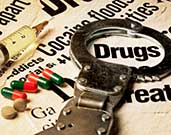|
|
 |
|
The
views expressed
on this page are soley those of the author and do not
necessarily
represent the views of County News Online
|
 |
Heritage Foundation
Teen Drug Use:
Cultural Amnesia, Current Harm
Seth Leibsohn
When it comes to teen drug use, not only are we on the wrong track, but
things are getting worse. This is not a mysterious happenstance. First,
note two data points in the accompanying chart: The high-water mark of
teen drug use in America was 1979; the low-water mark was 1992.
However, since 1992, the share of 12th graders reporting recent drug
use has increased 64 percent. These facts should immediately shape the
conversation, but, sadly, they do not.
What these data reveal is the fallacy of the commonplace notion that
“keeping drugs illegal doesn’t work.” In fact, reducing any social or
policy problem by more than half in the course of about a decade is the
definition of public policy success. Just imagine what would be said
about policies and results that cut fatherlessness or poverty or budget
deficits by more than half. Too few remember this success, and too many
are ignoring the lessons learned, which is why the trajectory of teen
drug use is back up and getting worse.
How were we successful? By taking a page from the first step in
substance abuse recovery: The country recognized that there was a
problem and got serious about dealing with it. As the nation’s first
drug czar, William J. Bennett, put it, practically the entire
country — from law enforcement to Hollywood to athletes to political
leaders — rolled up their sleeves and went to work:
Those old enough to remember will recall how much the cultural message
used to be anti-drug. There were the “This is your brain on drugs” ads
that were ubiquitous…. There were sit-coms aimed at children with
anti-drug messages. President George H.W. Bush and First Lady Nancy
Reagan, in their tenures, gave innumerable speeches on the harms of
drug use. [1]
What resulted? Drug use in America plummeted. We didn’t lose the drug
war; we began winning — big — and then we gave up on it. Now,
particularly in the teen population, drug use is going up again. We
need to ask ourselves a few questions about the changes in the culture
and the different cultural messages we now send in light of this
growing problem.
When was the last time anyone saw an anti-drug or “this is your brain
on drugs” ad? When was the last time anyone saw an anti-drug message
embedded into a popular television show or movie? How often has the
President ever spoken to this issue? (To my knowledge, the only time
this President, a man uniquely gifted at attracting the attention and
seriousness of our youth, delivered a major speech on substance or drug
abuse was this year — his last in office — in Atlanta).
Today, popular television shows (still downloaded and aired “On
Demand”) like Breaking Bad, Weeds, and High Maintenance laud,
celebrate, and make heroes of drug users and drug dealers. As the
President of Showtime said of Weeds (where the heroes and laugh lines
are about a drug-dealing family): “Our ratings were va-va-va-voom! Who
said hedonism is passe?”[2] The popular toy store Toys R Us had to face
protests before discontinuing the sale of a Breaking Bad doll complete
with a fake bag of cash and crystal meth.
As for the law, opposition to legalization of drugs is at an all-time
low, especially as it relates to marijuana, just as marijuana has
become more potent and dangerous and as more and more scientific
research is establishing its harms — particularly in the teen and
adolescent brain.[3] Research shows that the more drugs — particularly
marijuana — are de-stigmatized, the more the perception of harm goes
down, and as the perception of harm goes down, initiation and use
increase.[4]
Again, all of this is taking place just as the dangers are becoming
more and more widely known and understood by the scientific and medical
communities. This is public policy cognitive dissonance, and it helps
to explain why states like Colorado that have pioneered the
legalization movement have not only the highest teen marijuana use
rate, but also the highest overall teen drug use rate in the nation: a
whopping 60 percent higher than the national average.[5]
The efforts to de-stigmatize and legalize drugs have caused great harm
and have signaled the greatest surrenders in our previous efforts that
kept drug use low. They are upending decades of hard work to prevent
substance abuse and leading to greater costs in treatment,
rehabilitation, accidents, enforcement, and criminal violations, as
well as true education deficits. This is the opposite of good public
policy and good youth policy. Instead of building a culture that makes
greater health, education, and opportunity available to all, this is
how a society harms itself.
The tragedy here is that we know what has worked in the recent past. We
simply cannot afford to surrender those lessons before it is too late.
Read this and other articles at The Heritage Foundation
|
|
|
|

